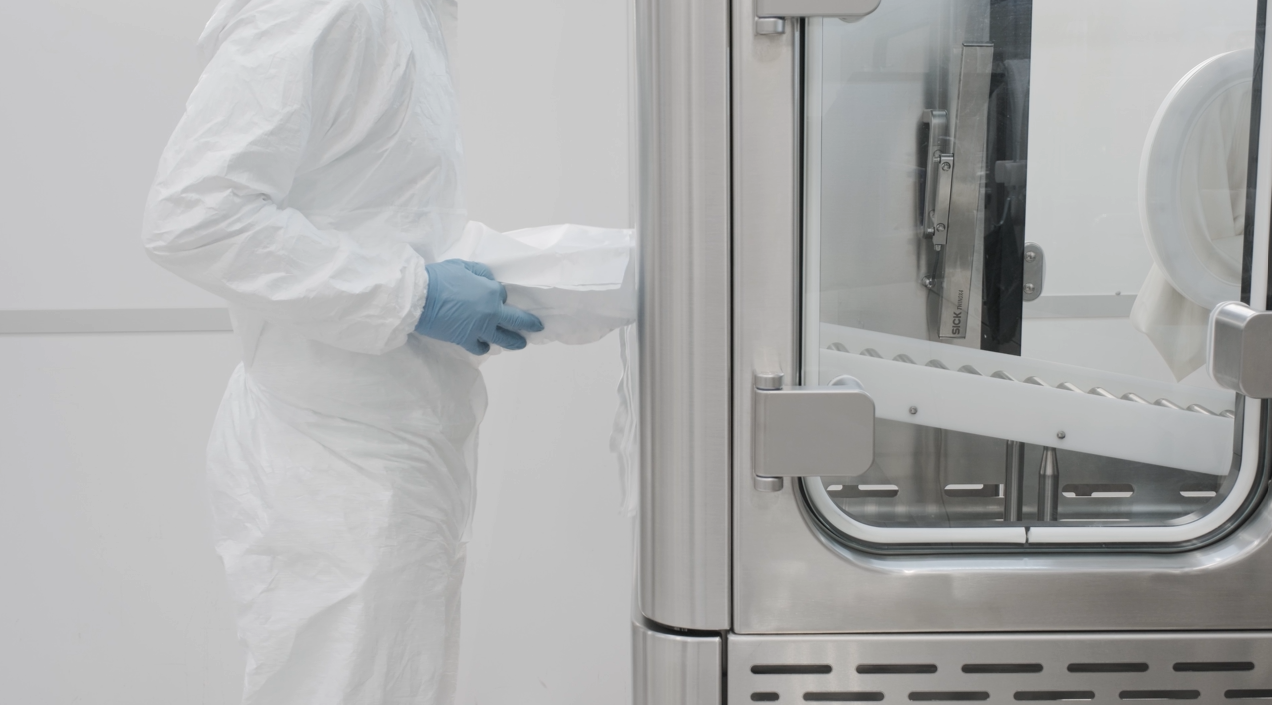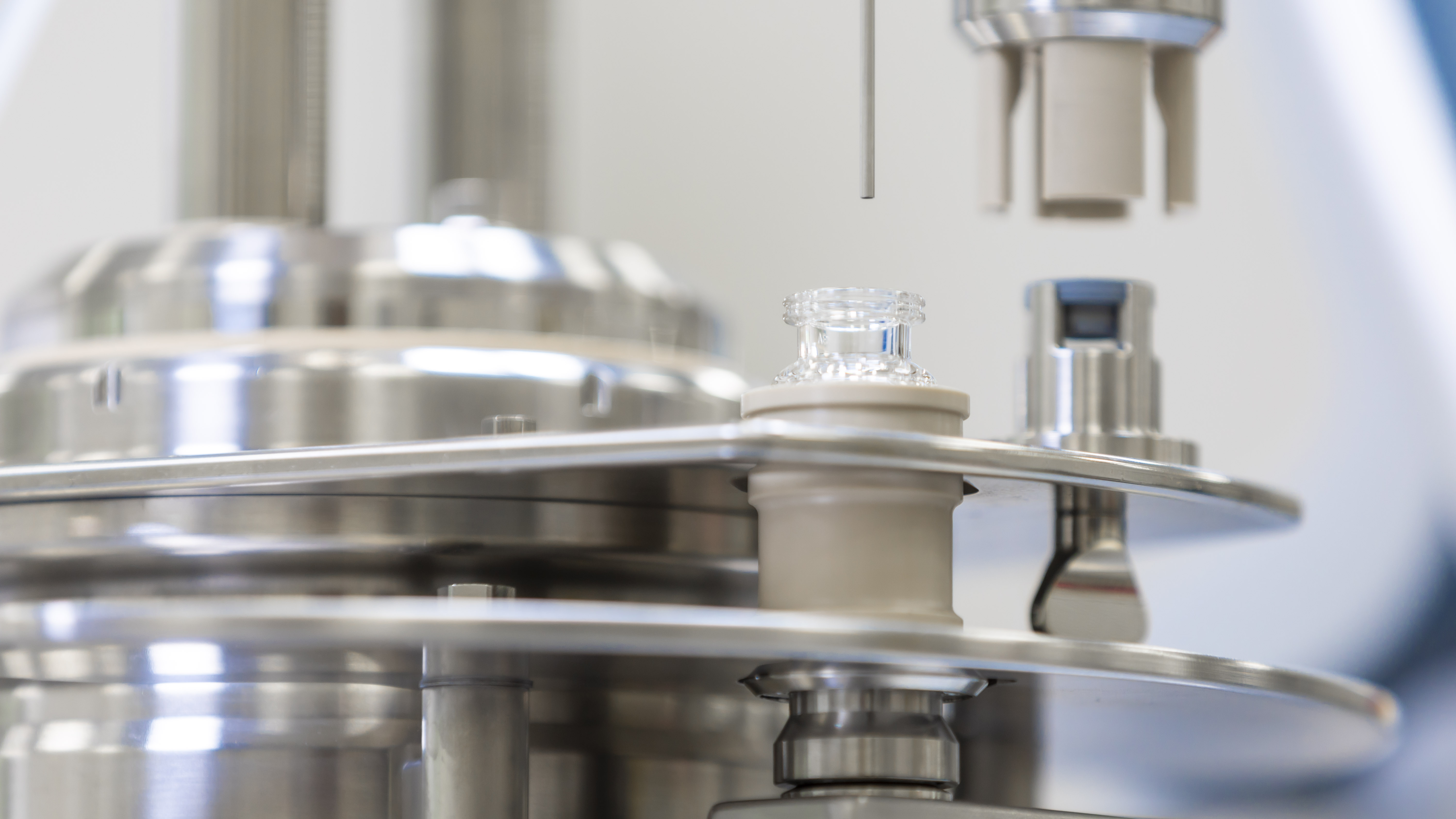The Future of Aseptic Manufacturing: Compact and Advanced Solutions
As the pharmaceutical industry advances into more complex modalities, from biologics to cell and gene therapies, the need for flexible,...
6 min read
Dr. Dave Seaward : 9 September 2024
 Process intensification initiatives will no doubt reduce the time it takes to produce an ATMP. Cell lines will be selected for speed of division and we will learn more about macro and micronutrients send precisely the right biosignals to optimise the process for speed. However, there will still be a natural limit that will drive other decisions and influence the form of any associated automation.
Process intensification initiatives will no doubt reduce the time it takes to produce an ATMP. Cell lines will be selected for speed of division and we will learn more about macro and micronutrients send precisely the right biosignals to optimise the process for speed. However, there will still be a natural limit that will drive other decisions and influence the form of any associated automation.
Because ATMPs are injected or infused, there is an added layer of production-related complexity; that is, the need to ensure that the product is not contaminated by any viable or non-viable particulate. Unlike with orally delivered therapeutics, the body really struggles to defend against contaminants delivered directly into the bloodstream.
For ATMPs, early stage production using aseptic technique has typically been done by highly skilled/trained laboratory technicians in personal protection equipment (PPE) working in biosafety cabinets (BSCs). Unless you have attempted it yourself, it’s difficult to appreciate just how difficult it can be to perform manual operations in BSCs whilst wearing full aseptic PPE!
Despite all precautions, the human operator remains the biggest risk to patients in terms of accidental contamination of the product. Numerous articles have demonstrated that humans are the main contamination risk in cleanrooms, particularly through the shedding of particles from clothing (even undergarments) and skin, which is exacerbated by movement. If this wasn’t bad enough, we humans need to breathe, which results in micro-organism-loaded liquid droplets being released from our mouths and noses.
Protecting therapies from this risk has led to the use of “functionally closed” and “closed” systems and the implementation of robots. It is likely that, soon, regulators will insist that ATMP manufacturers move away from operators in BSCs and use closed systems.
Different classes of therapies require distinct unit operations that function at varying scales and with different cycle/takt times. The natural consequence of optimisation is the need for divergent solutions for different scenarios. Viral vector-based gene therapies and allogeneic cell therapies lend themselves to larger-scale production compared with autologous ones.
For example, it is the norm to start process development using small-scale flask-based cultures; these are used to optimise process parameters, which can then be scaled into bioreactors for commercial-level production. Such stainless-steel bioreactor vessels can range from tens to low hundreds of litres in capacity. Suppliers of equipment serving these sectors are increasingly offering scale-up/scale-out paths to support their client base. Small benchtop equipment is offered for the discovery phase of a therapy and larger-scale equipment is then proposed for commercial manufacture.
For autologous cell therapies, the trend appears to be towards scaling-out functionally closed systems. This means that there is a very low process risk of scaling as the manufacturer simply buys more of the same piece of equipment. This relatively low risk strategy tends to “lock-in” one equipment/consumable manufacturer’s ecosystem. This strategy also fits with the “hub and spoke” model (see below) to produce ATMPs and autologous therapies.
If the starting material is the patient and unit operations are required following the extraction of a biopsy or blood, then the natural conclusion is that every hospital or care setting providing a therapy will require specialist equipment. It then begs the question whether it’s feasible to do full production within a hospital setting. Longer-term, this may well be the case. Now, though, the manufacturing process requires too much involvement from highly skilled operators.
Producing ATMP therapies is expensive and, as such, any waste comes with a high price tag. Given the number of pipes and surfaces that processing fluids encounter during production, a significant amount of viable and costly therapy is inevitably left behind. It is interesting to note the USP recommendation regarding excess amounts for liquid injections using vials and syringes (Table I): the smaller the fill volume, the higher the recommended overfill.

Imagine leaving 24% of a very costly therapy behind in a tubing set! For one specific therapy, 3P innovation engineers did a Gage R&R study using weight measurements to identify where product was being left behind. Typically, each unit operation suffered a 0.25–2.00% loss of product. Before the exercise, the client didn’t know where the biggest areas of loss were.
With hindsight, some may have been obvious … but others less so. Armed with this data, it was possible to suggest improvements. A Monte Carlo simulation was generated by 3P’s engineers based on the experimental results. Suggested improvements could be tested in simulation to justify implementation. As one might expect, some improvements were trivial to implement whereas others required significant investment to change tooling, etc., or involved a change in process (potentially requiring revalidation). The exercise enabled a reduction in losses for relatively minimal expenditure.
Industrial robotic solutions are seeing a boom throughout many sectors. This is being driven by a need for improved product quality, greater assembly precision, reduced labour costs and increased automation flexibility (for mass customisation, for example). In previous decades, the cost of robots often precluded implementation; however, ever lower equipment prices and increasing labour costs are now garnering rapid paybacks.
At the same time, microbioreactors are blazing a trail because of their small footprint. They are becoming increasingly sophisticated with the ability to control sparging, head gasses, feeding and temperature control, as well as incorporate metabolite measurements. Rather than progress through a known sequence of set-points against time, modern systems can adjust their set-points in real-time. AI-enabled controllers can learn and dynamically adapt, which is particularly important for autologous therapies whereby the incoming raw material varies considerably from patient to patient.
An artificial intelligence (AI) system is possibly the only practical means of optimising such a complex dataset. A traditional controller would process every batch of cells in the same way. Unfortunately, especially for autologous therapies, this means that not all patients would receive an optimised therapy. AI offers the ability to adjust to the variability of the incoming raw material. And, although this all sounds very complicated, it’s worth remembering that modern dishwashers include simple turbidity sensing to check how dirty the recycled cleaning water is becoming. In response to this simple sensor, the amount of washing (and energy) is directly related to the amount of dirt! Old machines simply ran through a fixed sequence and didn’t respond to the load. The term “AI” might make this sound more complex than it really is. Using CQAs and CPPs to better understand a process is key to unlocking this puzzle.
From this simple domestic appliance analogy, it’s worth remembering that humans have approximately 2000 miRNAs, 20,000 proteins, 30,000 mRNAs and 100,000 metabolites. Yet, it’s becoming feasible to measure all these. It then becomes possible to monitor patient outcomes using AI and then learn how best to treat a patient.
Certain therapies are known to work in some patient groups and not in others: AI offers the ability to join the dots of cause and effect. This ensures appropriate treatment and better patient outcomes, which becomes even more important when innovative payment models are considered — such that the producer is not paid per treatment but on therapeutic benefit per patient per year. Then, knowing the right patients to treat becomes significantly more important.
With all this data, only AI with sophisticated Big Data pattern recognition can tease knowledge from these large datasets, thereby making it increasingly important and valuable. For example, the ability to track anonymised patient data will drive the ATMP sector forward. This data is likely to reside in the cloud in some form of secure quality management and information system. And although AI can deal with unstructured data, it will become increasingly important to structure the information — all the while acknowledging that hybrid data (semi-structured) is likely to appear from disparate sources (analytical instruments/lab reports, etc.).
Labelling data to ease the application of advanced tools will also be paramount. AI will help humanity to learn which factors will most influence a positive patient outcome. This, is turn, will lead to advanced diagnostics to target specific patients who will respond to a treatment.
Another area in which modern computing has a significant role to play is augmented/virtual reality (A/VR. To overcome staff shortages and reduce the risk of operator error, manual lab processes are starting to use “digital twins.” With AR, operators can be monitored and assisted with a digital overlay on top of reality. A trainer can monitor and guide an operator remotely; plus, any given process can also be monitored automatically, with data from the operator and equipment being loaded to the cloud for analysis via AI as discussed above. There is a new world of opportunity that is opening up for developers of ATMPs as a direct result of ever-increasing computing power, digital twins and AI algorithms. This can only speed up the development of novel ATMP therapies.
Even though unit operations remain in place, improvements are constantly being made to enhance process robustness, speed of production and cost of goods. Sectors fragment as new therapies arrive and an ecosystem of vendors (equipment, consumables, excipients, etc.) evolves to support Big Pharma manufacturers.
It’s likely that, with time, the core ATMP processes in place today will remain. No doubt, they’ll be refined to increase throughput and quality, so expect to see larger-volume processes being converted from batch to continuous. Equipment complexity, especially in terms of sensing and control, will certainly increase. It was noted that takt and cycle times are particularly important for ATMPs, wherein cycle times can vary dramatically for different unit operations. As yet, though, there is no clear solution to this conundrum. We suspect that each therapy area will develop its own preferred automation equipment and infrastructure because, for example, the needs of an autologous cell therapy are simply too different to a viral vector-based gene one.
All equipment vendors will need to offer scalability from benchtop to commercial production. The ATMP sector is likely to adopt AI, the cloud and Industry 4.0 technologies earlier than would normally be expected for the highly regulated pharmaceutical industry. Tracking patient-specific therapies digitally through the supply chain will become an increasingly important supporting technology. And, whereas larger-volume therapies will follow the classic route of centralised factories, the localised and patient-specific nature of other treatments will drive a decentralised hub and spoke model with different forms of automation.

As the pharmaceutical industry advances into more complex modalities, from biologics to cell and gene therapies, the need for flexible,...

In this webinar recap, David Johnson, Sales & Marketing Director at 3P innovation, and Tracy Moore, Principal Consultant at TM Pharma and former...
